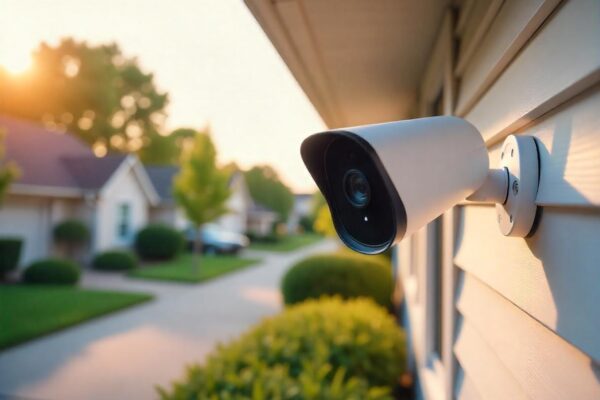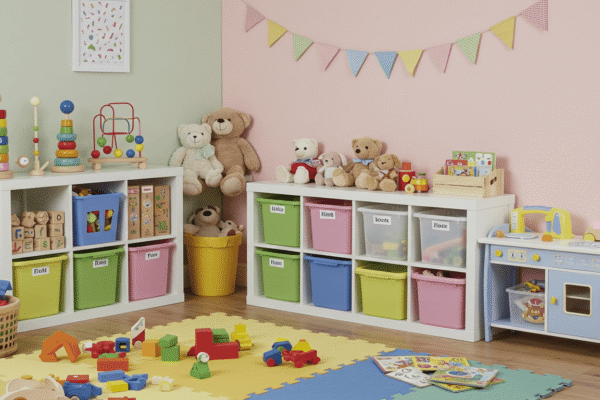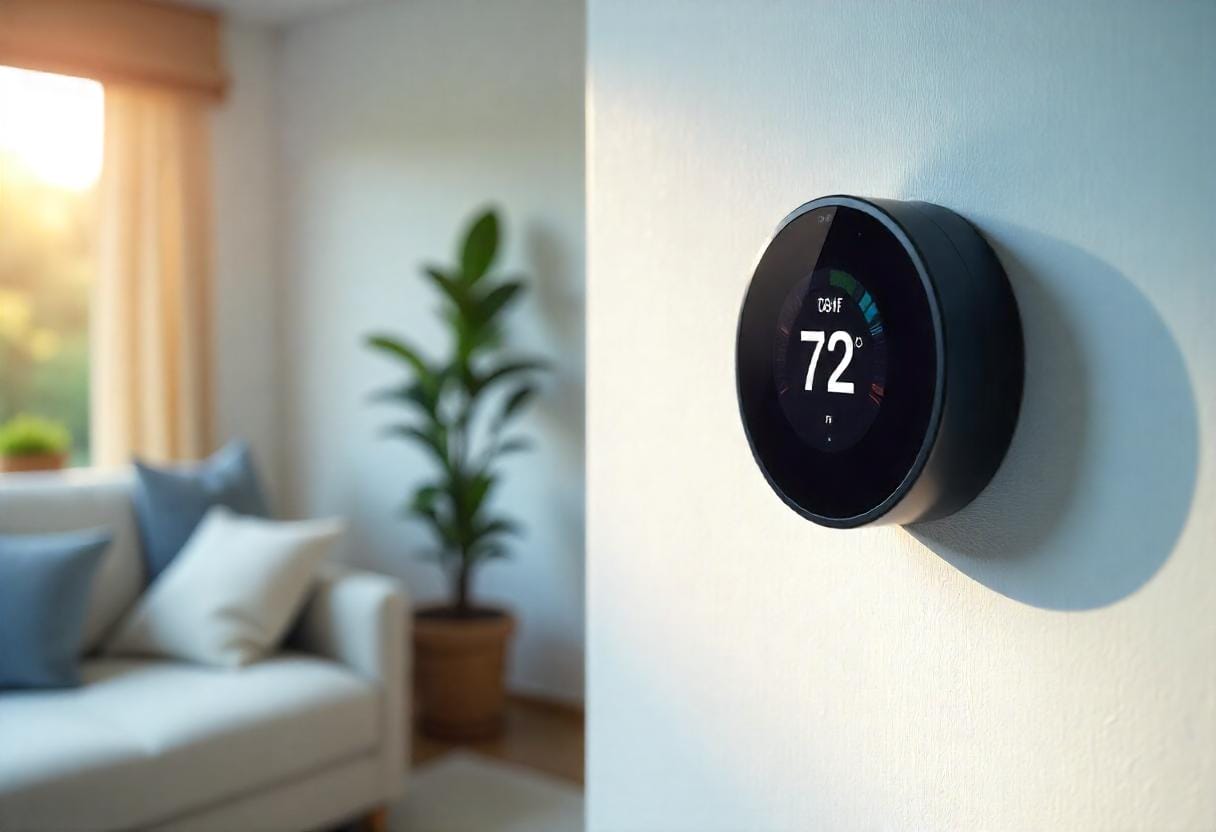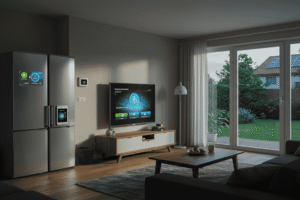Programmable thermostats are one of the smartest—and most underrated—tools for cutting down your energy bills without sacrificing comfort. Whether you’re tired of overheating your home in the summer or overpaying in the winter, a programmable thermostat helps you take control of your indoor climate while using less energy. In this guide, we’ll break down how these devices work, why they matter, and how you can use them to unlock real savings—both on energy and on money.
What Is a Programmable Thermostat and Why Should You Care?
A programmable thermostat is a home device that automatically adjusts the temperature in your living space based on a pre-set schedule. Instead of constantly tweaking the settings manually, you can set your preferences once, and the thermostat does the rest—helping you maintain comfort while saving energy. But this isn’t just about convenience; it’s a step toward smarter, more sustainable living.
Smarter Than You Think: How It Actually Works
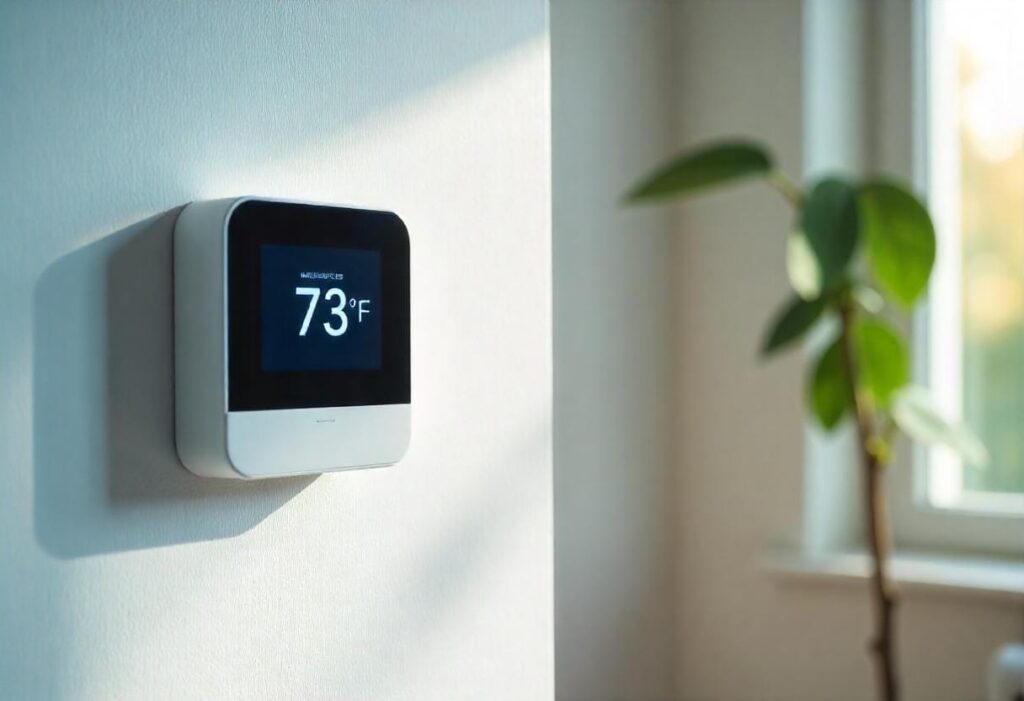
A programmable thermostat operates by following the schedule you program into it. You can create different temperature settings for different times of the day or days of the week—like lowering the heat while you’re at work or increasing it just before you wake up. Some models offer daily or weekly programming options, adapting to your lifestyle patterns.
These thermostats communicate with your HVAC system, telling it when to turn on or off based on your programmed preferences. This minimizes unnecessary heating or cooling, reduces wear and tear on the system, and ultimately cuts down your energy consumption.
Manual vs. Programmable: A Real-World Difference in Numbers
So, does switching from a manual to a programmable thermostat actually save money? Let’s take a look at how the numbers compare for an average household:
| Feature | Manual Thermostat | Programmable Thermostat |
|---|---|---|
| Temperature Control | Fully manual | Automated by schedule |
| Energy Savings Potential | Low (dependent on user behavior) | High (up to 10–20% annually) |
| User Effort | High (frequent adjustments) | Low (set it once and forget it) |
| Comfort Consistency | Inconsistent | Optimized and consistent |
| Long-Term Cost Efficiency | Less efficient | More cost-effective over time |
As you can see, the long-term benefits of using a programmable thermostat go beyond just automation—it’s about smarter, more efficient home management.
Hint: It’s not just about convenience—it’s about control
By using a programmable thermostat, you’re not giving up control—you’re gaining more of it. Instead of reacting to temperature changes, you’re anticipating them. That means fewer fluctuations, more predictable energy usage, and a home that works on your schedule, not the other way around.
The Secret Sauce: How Programmable Thermostats Help You Save Energy
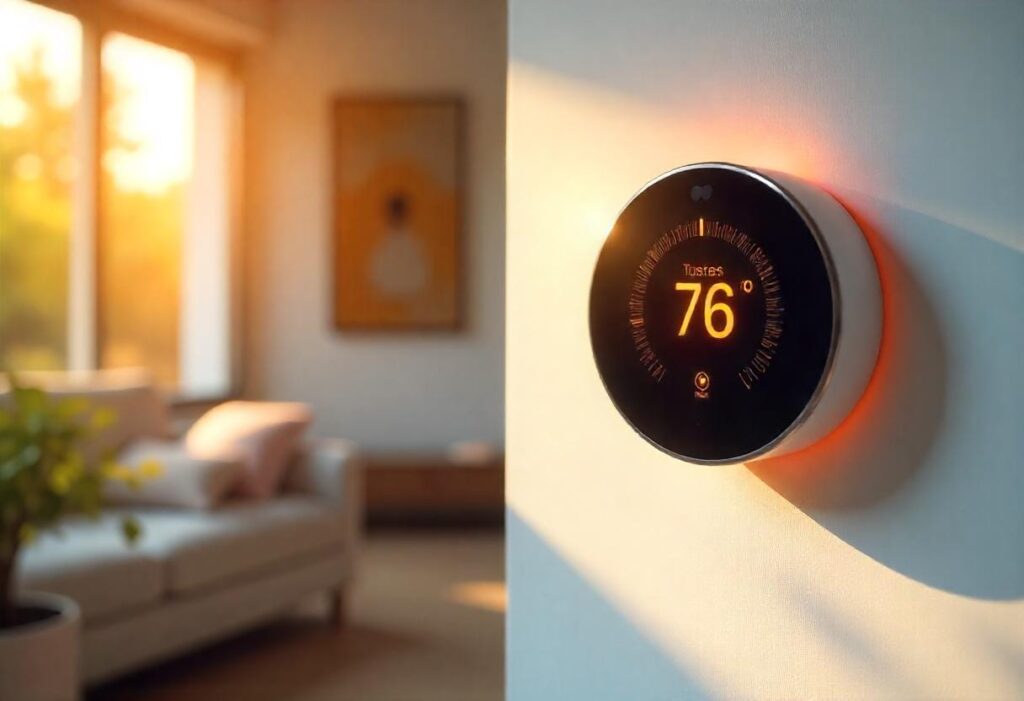
Energy efficiency isn’t just about turning things off—it’s about using them smarter. That’s where programmable thermostats shine. By automating your heating and cooling habits, they optimize when and how your HVAC system runs, reducing waste without compromising comfort.
Understanding Temperature Cycles and HVAC Efficiency
Every home has natural temperature cycles throughout the day. The sun heats your space in the afternoon, evenings cool it down, and your HVAC system works to maintain the ideal balance. A programmable thermostat takes these cycles into account and schedules operation around them.
When you constantly adjust the thermostat manually—or forget to adjust it at all—your HVAC system ends up working harder than it needs to. But with a programmable thermostat, the system runs at its most efficient times, avoiding unnecessary spikes in usage and reducing strain on equipment. That means less energy used and longer life for your heating and cooling systems.
How Scheduling Translates to Lower Utility Bills
Programming your thermostat to follow your daily routine means the system isn’t heating or cooling an empty house. And since your HVAC system is one of the biggest energy consumers in your home, even small adjustments can lead to significant savings.
Instead of blasting the heat the moment you walk in or forgetting to turn it down when you leave, your programmable thermostat does the work for you. By matching your HVAC usage with when you actually need it, your energy consumption drops—and so do your bills.
Tip Box: 3 Real-Life Scheduling Examples to Maximize Savings
- The 9-to-5 Worker (Weekday Schedule)
- 6:30 AM: Warm up the house before you wake (e.g., 70°F)
- 8:00 AM – 5:00 PM: Set back to 62°F while you’re at work
- 5:30 PM – 10:30 PM: Comfort zone at 70°F for evenings
- 10:30 PM – 6:30 AM: Lower to 65°F for sleep
- Work-from-Home Setup
- 7:00 AM – 9:00 AM: Morning comfort at 70°F
- 9:00 AM – 5:00 PM: Maintain steady 68°F in your workspace
- 5:00 PM – 10:00 PM: Slight increase to 70°F for relaxation
- 10:00 PM – 7:00 AM: Drop to 64°F for energy savings overnight
- Weekend-Focused Family
- Saturday & Sunday
- 8:00 AM – 11:00 PM: Consistent 70°F while everyone’s home
- 11:00 PM – 8:00 AM: Drop to 65°F for overnight rest
- Saturday & Sunday
These simple schedules can help the average household save up to 10% annually on heating and cooling costs—without sacrificing comfort.
Common Thermostat Myths That Are Costing You Money
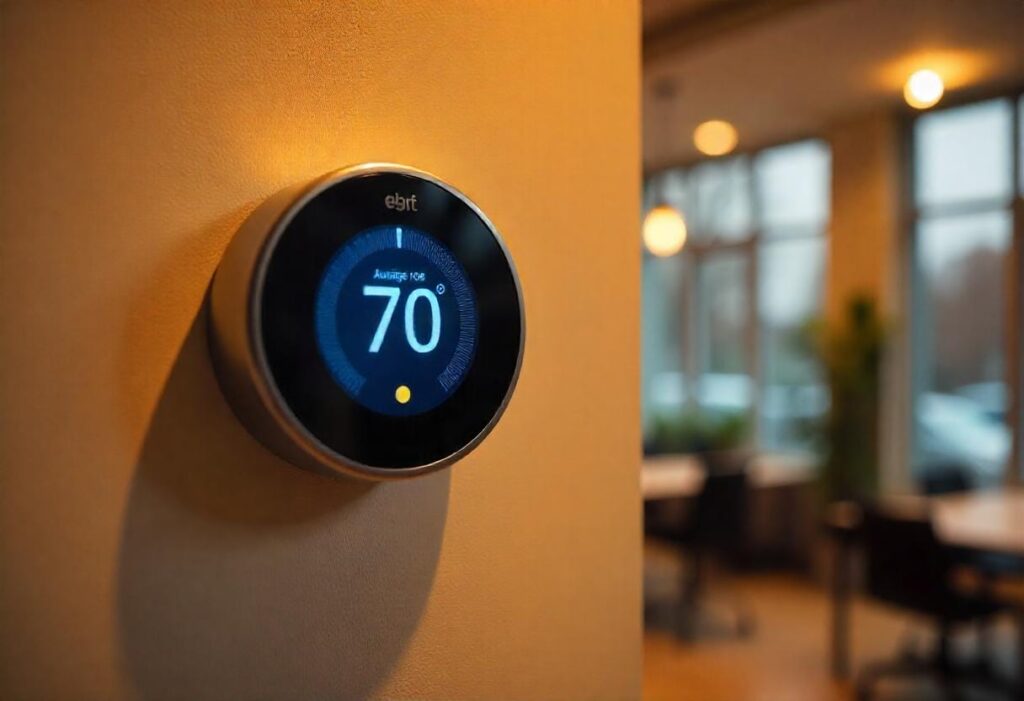
There’s a surprising amount of bad advice floating around when it comes to programmable thermostats—and believing it can quietly drain your bank account over time. Let’s bust a few of the most common myths that are doing your energy bill no favors.
“Leaving It at One Temperature Saves More” — False.
One of the most stubborn myths is that keeping your home at a constant temperature all day uses less energy than adjusting it. In reality, running your HVAC system continuously—especially when you’re not home—means it’s working harder and longer than necessary.
Programmable thermostats are designed to reduce usage during idle hours and ramp up efficiency only when needed. In fact, the U.S. Department of Energy reports that reducing your thermostat by 7°–10°F for 8 hours a day can save as much as 10% a year on heating and cooling.
The key isn’t constancy—it’s control.
“Programming is Too Complicated” — Also False.
Some people shy away from programmable thermostats because they think it requires tech wizardry. But in truth, most models are designed with simple scheduling tools and intuitive interfaces. You’re not coding a spaceship—you’re just telling your home when to warm up or cool down.
Plus, once it’s set, you rarely need to touch it again—unless your routine changes. It’s a few minutes of setup for long-term savings.
Reality Check: Most people are overpaying for heating and cooling
Think you’re the exception? You might not be. Here’s a quick checklist to see if you’re unknowingly wasting energy:
✅ You leave your thermostat at the same temp all day, every day
✅ You manually adjust it each time you’re too hot or too cold
✅ You often forget to lower the temp when leaving the house
✅ You’ve never actually set a weekly schedule on your thermostat
✅ You think your heating/cooling bills are just “part of life”
If you checked two or more, it might be time to rethink your habits—and let your programmable thermostat do what it was designed for: saving you money without sacrificing comfort.
How to Set Your Thermostat for Maximum Efficiency
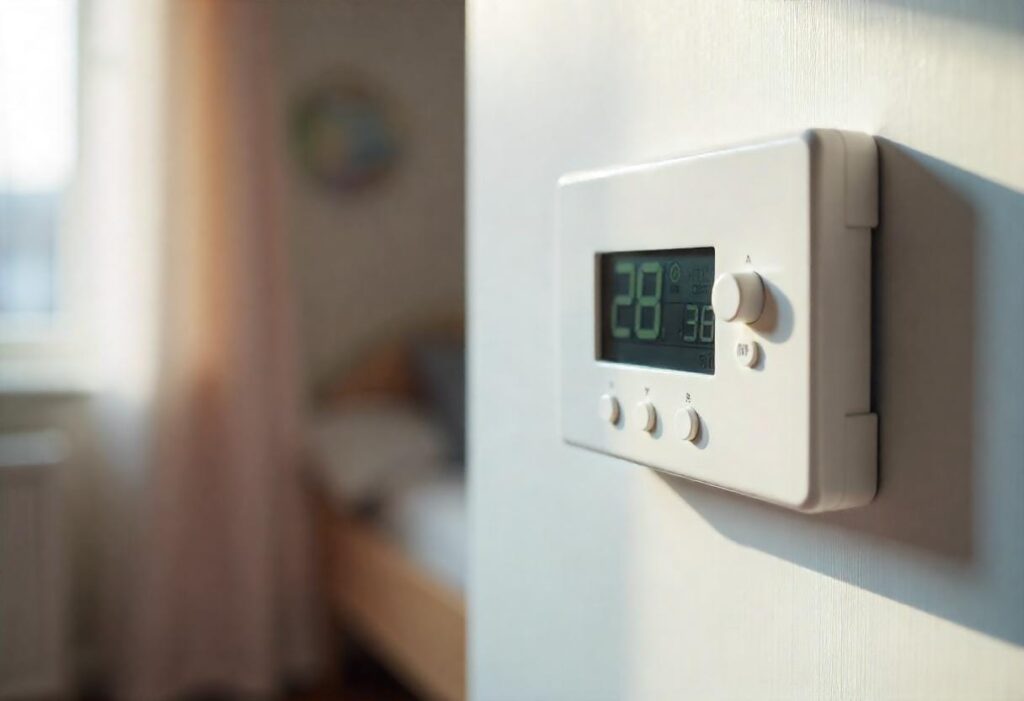
Knowing how to properly set your programmable thermostat is key to unlocking its full potential. Different seasons and daily routines call for different temperature settings, and fine-tuning these can maximize both comfort and energy savings.
The Ideal Settings for Winter, Summer, and Between
To help you set the right temperature no matter the time of year, here’s a quick guide showing ideal thermostat settings by season:
| Season | When Home (°F) | When Away or Sleeping (°F) | Energy Saving Tip |
|---|---|---|---|
| Winter | 68 – 70 | 60 – 62 | Lower temp when sleeping or away to save up to 10% annually |
| Summer | 74 – 78 | 80 – 85 | Increase temp when away to reduce AC runtime and costs |
| Spring/Fall | 65 – 72 | 60 – 65 | Adjust based on outdoor weather; use fan for airflow |
These temperatures balance comfort and efficiency, reducing unnecessary heating or cooling when it’s least needed.
Sleeping, Working, Traveling: Adjusting for Your Lifestyle
Your daily activities and schedule have a huge impact on how you should program your thermostat. Here’s how to tailor settings based on common lifestyle scenarios:
Temperature Recommendations by Activity
- Sleeping: Set temperature slightly cooler in winter (60–65°F) and warmer in summer (78–80°F) for better sleep and energy savings
- Working from Home: Maintain consistent comfort temperature during work hours, then lower or raise temperature in off-hours
- Traveling or Extended Absences: Program your thermostat to energy-saving temperatures to avoid heating or cooling an empty home
- Evenings at Home: Return to a comfortable temperature to relax without wasting energy during the day
Customizing your programmable thermostat this way keeps your home comfortable while cutting energy costs based on your actual needs.
Thermostat Schedules That Actually Work
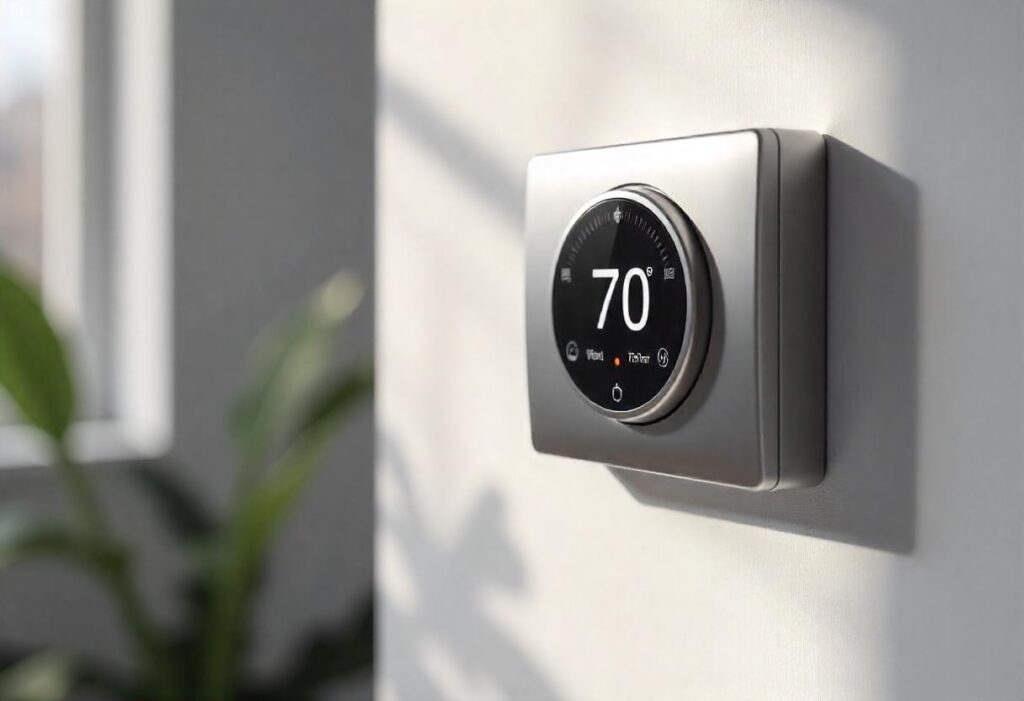
Finding the right programmable thermostat schedule is a game-changer for maximizing energy savings and comfort. But with so many options—from simple weekday/weekend splits to fully customizable smart schedules—how do you pick the best one for your lifestyle?
The 5-2, 7-Day, and Smart Schedules—Which One Fits You?
- 5-2 Schedule: This classic schedule lets you program one temperature pattern for weekdays (Monday to Friday) and a different one for weekends. Ideal if your routine is consistent during the week but changes on weekends.
- 7-Day Schedule: Offers the flexibility to set unique temperatures for every single day. Perfect if your schedule varies from day to day, such as shift work or irregular commitments.
- Smart Schedules: These advanced thermostats learn your habits over time and adjust settings automatically. Great for busy households or anyone who prefers a “set it and forget it” approach with intelligent energy savings.
Choosing the right schedule depends on how predictable your routine is and how much control you want to maintain.
Realistic Examples for Different Households
Let’s look at how different household routines can leverage thermostat scheduling for maximum efficiency:
- Work-from-Home Professional: Maintains steady temperature throughout the day but lowers settings slightly during breaks or lunch hours.
- 9-to-5 Worker: Uses a 5-2 schedule to reduce heating/cooling while away at work and enjoys comfort during mornings, evenings, and weekends.
- Frequent Traveler: Programs the thermostat to energy-saving modes for days away, with quick ramp-ups before returning home.
(Visual suggestion: Calendar graphic showing different schedules by household type—morning/evening temps, away periods, weekend adjustments)
A Table: Sample Daily Schedule vs. Energy Saved
| Schedule Type | Example Setting (°F) | Estimated Energy Savings* | Best For |
|---|---|---|---|
| 5-2 Schedule | 68°F (weekdays), 62°F (away) | Up to 10% | Standard office workers |
| 7-Day Schedule | Custom daily temps, e.g., varying | Up to 15% | Variable schedules |
| Smart Schedule | Auto-adjusts based on habits | Up to 20% | Busy or tech-savvy users |
*Savings depend on usage patterns and climate.
Common Setup Mistakes (and How to Fix Them)
Even the smartest programmable thermostats can’t perform miracles if they’re set up incorrectly. Avoid these common pitfalls to ensure your thermostat works efficiently and saves you money.
Placing It in the Wrong Spot
Where you install your thermostat matters. Placing it in direct sunlight, near vents, or on exterior walls can cause inaccurate temperature readings. This leads to your HVAC system working harder than necessary, wasting energy and driving up costs.
The best spot is on an interior wall away from drafts, heat sources, and direct sunlight, ideally at eye level.
Setting It and Forgetting It
Another mistake is the “set it once and never touch it” approach. Your routine or seasons may change, and your thermostat schedule should too. Regular adjustments keep your home comfortable and maximize savings.
Checklist: Things to Double-Check Every Month
| Do This | Not That |
|---|---|
| Place thermostat on an interior wall, away from heat/cold sources | Avoid spots near windows, vents, or direct sunlight |
| Review and update your temperature schedule monthly | Don’t leave the schedule unchanged for months |
| Check batteries or power source regularly | Don’t ignore low battery warnings |
| Clean the thermostat surface gently to avoid dust buildup | Don’t use harsh chemicals or spray directly on the device |
| Use vacation or away modes when traveling | Don’t forget to reset after trips |
Following this simple checklist keeps your programmable thermostat running smoothly and saving energy efficiently.
Beyond Savings: Other Benefits of Programmable Thermostats
While energy and cost savings are the biggest perks of using a programmable thermostat, the advantages don’t stop there. These smart devices also enhance your home’s comfort and contribute to a healthier environment.
Consistent Home Comfort and Air Quality
A programmable thermostat helps maintain a stable indoor temperature by adjusting heating and cooling in sync with your schedule. This consistency prevents sudden temperature swings that can cause discomfort or exacerbate allergies.
By controlling your HVAC system more efficiently, it also helps reduce excess humidity and improves air circulation—both key to better indoor air quality.
Environmental Impact of Smarter Heating & Cooling
Lower energy consumption means fewer greenhouse gas emissions. Using a programmable thermostat is a simple yet impactful way to shrink your carbon footprint without sacrificing comfort. Small actions like these add up when millions of homes adopt smarter temperature control.
Bonus: How Less HVAC Wear-and-Tear Saves Money in the Long Run
By reducing unnecessary runtime, programmable thermostats decrease the strain on your heating and cooling systems. This means fewer breakdowns, less frequent repairs, and a longer lifespan for your HVAC equipment—translating into significant savings over time.
Getting Started: Your First Week with a Programmable Thermostat
Starting with a new programmable thermostat can feel overwhelming, but a step-by-step plan makes it simple. This section guides you through the crucial first week to set up your device effectively and start saving energy right away.
Day-by-Day Setup Strategy
Follow this easy “Week 1 Thermostat Setup Plan” to gradually adjust your settings and get comfortable with your new thermostat:
| Day | Task | Goal |
|---|---|---|
| Day 1 | Install and familiarize yourself with the controls | Understand basic functions |
| Day 2 | Set your weekday schedule based on typical routines | Begin saving during work hours |
| Day 3 | Program weekend schedule for different routines | Maximize savings on non-work days |
| Day 4 | Test “away” or “vacation” mode | Ensure energy is conserved when out |
| Day 5 | Monitor comfort levels and note any issues | Identify adjustments needed |
| Day 6 | Fine-tune temperature settings for day and night | Improve comfort without wasting energy |
| Day 7 | Review energy consumption (if available) | Measure early savings and tweak |
Tracking Progress: How to Know It’s Working
Many programmable thermostats include energy reports or usage data. Regularly reviewing these can show how much you’re saving. If your bills don’t drop after a few weeks, recheck your schedule and settings—small adjustments can make a big difference.
Small Tweaks, Big Impact: Adjusting Based on Your Lifestyle
Remember, your life changes and so should your thermostat settings. Whether you start working from home, travel more, or just prefer cooler nights, updating your schedule keeps your programmable thermostat working efficiently—and your energy bills low.
Why Programmable Thermostats Are a Smart Choice for Every Home
Programmable thermostats offer more than just energy savings—they provide control, comfort, and peace of mind. By setting your thermostat thoughtfully and avoiding common mistakes, you can reduce utility bills, improve indoor air quality, and even extend the life of your HVAC system. Whether you’re new to smart home technology or looking to optimize your current setup, embracing a programmable thermostat is a simple, effective step toward a more efficient and comfortable home.





